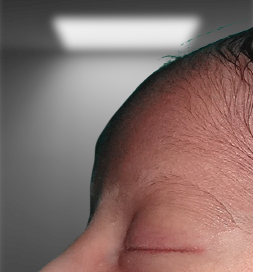Antimongoloid Slant of Eyes
The term "slanting of the eyes" refers to the variation in the level that exists between the inner canthi and the outer canthi of the eye. There are two possible orientations for the eyelids: upward and downward.
It is referred to as a "mongoloid" slant when there is an increase in the inferomedial orientation of the intercanthal axis (the horizontal axis of the eye). On the other hand, it is referred to as an "antimongoloid" slant when the lateral canthus is lower than the medial canthus. However, it is best to exclude these phrases and instead describe the orientation of the intercanthal axis and palpebral fissure, for example, increased inferolateral slant or increased inferomedial slant. If the left and right intercanthal axis do not meet in the midline of the nasal dorsum, this may be an indication of asymmetry in the facial structure.
Mongoloid Slant
Mongoloid slant refers to the downward angle between the lateral and medial canthus. This describes an upward tilt of the eyes. In the following circumstances, mongoloid slant is frequently observed:
- Down syndrome (down)
- Prader-Willi syndrome
- Aarskog disease
- Ectodermal dysplasia
- Mongolian ethnicity

Antimongoloid Slant
The term "antimongoloid slant" describes the eyes' downward tilt. The line connecting the inner canthi is above the outer canthi. The following conditions are frequently connected with an antimongoloid slant:
- Alport disease
- Apert syndrome
- Alagille syndrome
- Cri-du-chat syndrome
- Crouzon disease
- Noonan syndrome
- Pfeiffer syndrome
- Syndrome involving chromosome 10p deletion
 Reviewed by Simon Albert
on
September 09, 2022
Rating:
Reviewed by Simon Albert
on
September 09, 2022
Rating:











